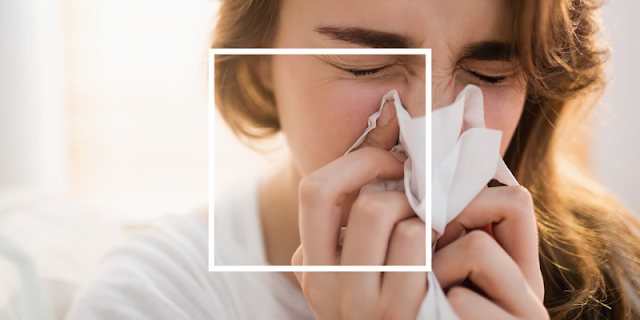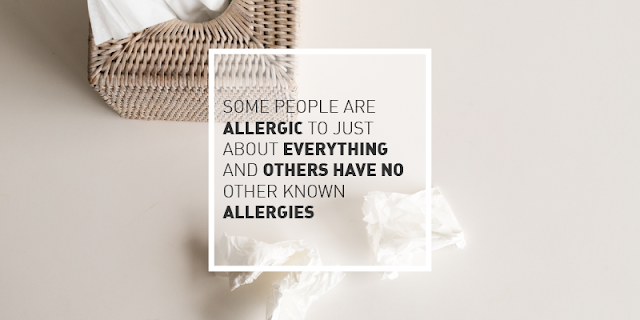Its spring! The birds are singing. The days are longer. The sun is shining. The grass is getting green. The flowers are blooming. The trees are coming back to life after being leafless and dreary all winter. And there is pollen everywhere! If you have allergies this means that you are likely miserable while everyone else is basking in the glory of nature’s beauty.
What Is Pollen?
Pollen is an allergen. Up to 20 percent of the United States’ population, well over 50 million Americans, suffer from seasonal allergies that are caused by it. Pollen comes from trees, grasses, flowers, shrubs, and weeds. It is part of a plant’s reproductive system, catching a ride on the wind or on pollinating insects. It can travel miles on the air currents and depending on the species that exist in any given part of the country can join dozens, if not thousands, of other types of pollen that are landing on your skin, irritating your eyes and being breathed in. Upon contact, any pollen that you are personally allergic to will cause a reaction that is casually called hay fever, or allergic rhinitis. Spring dust and mold can aggravate this.
The symptoms of hay fever can include sneezing, watery and itchy eyes and congestion that makes you feel like you have a cold or even the flu. It can also cause skin irritation or a rash. And if you suffer you may suffer more each year. The American College of Asthma, Allergy, and Immunology tracks the number of reported cases and reports that: “According to a recent study published in the Annals of Allergy, Asthma, and Immunology, pollen counts slowly rise annually and are expected to double by the year 2040. This is due to economic growth, global environment sustainability, temperature and human-induced changes, such as increased levels of carbon dioxide. By making an appointment with your allergist in January or February, you’ll be well on your way to relief before symptoms start.” (Source).
Pollen levels are counted, cataloged and forecasted like storms are. In fact, there is an entire website, run by scientists, that maintains The National Allergy Map. Local information can also be found on The Weather Channel, which during the pollen season maintains a localized allergy forecast. The pollen index provides detail on the total pollen in a year. It is high when there is a long spring which causes more pollen sources (flowering plants). Some pollens cause more predictable allergies than others. What this means is that a pollen count can be very high, but an allergy forecast not, and vice versa.
Skin Testing for Allergies
Some people are allergic to just about everything and others have no other known allergies, except for when their hayfever hits. Not only can allergies vary person by person, but the impacts of the allergen can as well. Furthermore, from year to year, an individual’s allergies and allergic reactions can change. The only way to tell for sure what you are allergic to is by having an allergy test.
Allergy tests are administered by allergists in an office setting. The doctor will draw a grid on your arm. Inside of each individual area, a drop of an allergen that is suspected to have an effect on you is pricked onto the skin. If you are allergic to that particular pollen (in this case) your skin will turn red and swell where it was inserted. If you have a positive reaction, which means that you test positive for an allergy, your skin may also become itchy. These are reactions that should clear up in most cases within hours. If it is too uncomfortable a cream like hydrocortisone can be applied that will stop the reaction. That reaction will serve as a warning for exactly which allergen can cause allergic contact dermatitis.
When an allergen lands on your face it causes a release of histamine. This is your body’s way of fighting off the foreign substance. Histamine is a neurotransmitter that causes the blood vessels to dilate and leads to inflammation that at high levels can cause eczema. At lower levels, it is responsible for redness, mostly around your cheeks, nose, and eyes. Allergy stricken skin is not pretty.
Protecting Your Skin from Pollen
In order to alleviate your suffering and protect your skin, you should take the following steps.
- Know what you are allergic to and avoid it as much as possible. This may mean spending more time inside when pollen and allergy indicators are high and running an air purifier that will clean the irritants out of the air. Some people take allergy vacations.
- Conscientiously take any medication that your doctor recommends to prevent or block the histamines that will cause a reaction. In some cases over the counter medications are sufficient and in some cases, you will need to take a prescription that may be oral or given as a shot.
Cleansing your face of allergens so that they do not sit on your skin with a product that is non-irritating will help. So will treat your skin with calming serums and moisturizers that contain anti-redness and anti-inflammatory properties. Ask your allergist and dermatologist if you have any questions or concerns, always follow their recommendations, and use the highest quality skincare products you can find. MDSUN Soothener is an example of a product, developed by a leading skincare doctor, that may help relieve the impact of allergens on your sensitive skin.
Skin Care Tips From MDSUN Skin Care®
Please Visit Our Official Website - MDSUN Skin Care




Comments
Post a Comment